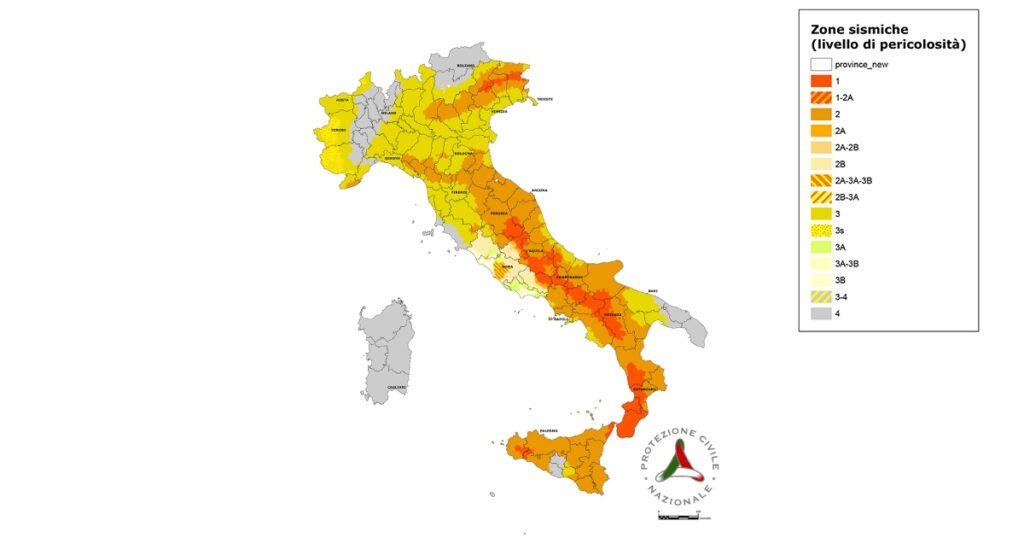
January 31, 2025
What are the seismic zones in Italy?
Italy experiences considerable seismic activity, with more than 190,000 seismic events recorded by the National Seismic Network over the last 30 years alone. In 2003, our government decided to divide the territory into 4 zones based on seismic risk (with no. 1 indicating the highest risk and no. 4 the lowest),
It should be noted that the Sismabonus, which has been extended until 2024, is accessible to businesses located in zones no. 1, 2 and 3 those with a greater risk.
Seismic risk of Italian regions
Below is a table showing the various zones and the regions that fall into that:
Zone 1; high seismic risk
very strong earthquakes can occur in these areas, the most dangerous zone;
- Friuli-Venezia Giulia
- Veneto
- Abruzzi
- Umbria
- Molise
- Campania
- Sicily
Zone 2; medium-to-high seismic risk
possibility that fairly strong earthquakes with fairly high repercussions could occur;
- Emilia-Romagna
- Lazio
- Marches
- Apulia
- Basilicata
Zone 3; medium-to-low seismic risk
tremors of modest intensity may occur in this zone;
- Lombardy
- Tuscany
- Liguria
- Piedmont
Zone 4; low seismic risk
low probability of seismic damage, the least dangerous area;
- Sardinia
- Trentino-Alto Adige
- Aosta Valley

Map of Italian seismic zones (Source: Presidency of the Council of Ministers; Department of Civil Protection)
It is worth noting that there is a chance that the classification of certain regions may change over the years as a result of seismic events.
For example, one of the latest updated areas is Veneto, which in 2021 updated its seismic zoning through a resolution of the regional council.
Over the years, the way of classifying seismic zones has undergone several variations to adapt to new discoveries and notions on the seismic situation of our territory and obviously to the seismic events that have occurred over the years.







